What Are the Things Plants Need to Grow? Essential Tips for Robust Growth
- June 21, 2024
- 0 comment
Discover what are the things plants need to grow! This guide offers essential tips for ensuring robust and vibrant plant growth. Have you ever wondered why some plants do well and others don’t? It all comes down to understanding what your plants need.
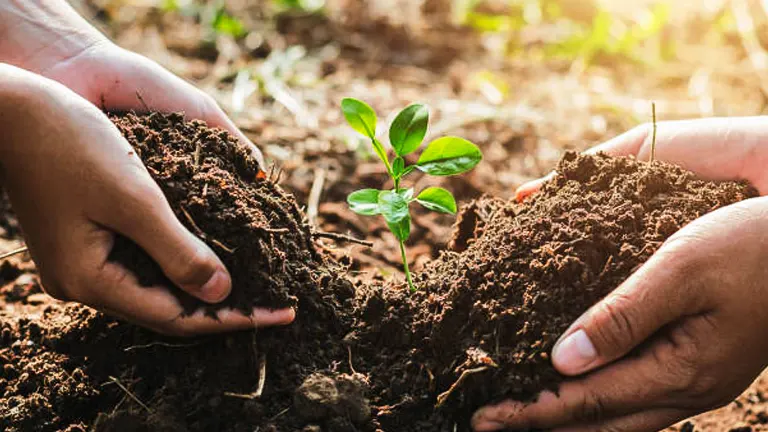
This guide will cover the basics like sunlight, soil nutrients, and water. We’ll give you simple tips that make a big difference in how your plants grow. By the end, you’ll know how to keep your garden healthy and thriving.
What Are the Things Plants Need to Grow
- Light Requirements
- Water Needs
- Soil Quality
- Nutrient Essentials
- Air and Temperature
- Space to Grow
- Special Care for Specific Plants
- Conclusion
- FAQs
Light Requirements
Why Light is Essential

Plants harness light through a process called photosynthesis, where they convert light energy into chemical energy stored as glucose, which fuels their growth and metabolic processes. Light is not only a source of energy but also a critical signal that triggers various growth responses such as flowering and seed germination.
Photosynthetic Efficiency and Light
Different plants have varying light absorption efficiencies, governed by their unique chlorophyll content and cell structure. This efficiency determines how effectively a plant uses light to convert carbon dioxide and water into glucose and oxygen. For instance, plants adapted to shady environments typically have larger leaves with more chlorophyll per cell, allowing them to capture more light under low-light conditions.
How Much Light Do Plants Need?
Light requirements can vary significantly:
- Sun-loving Plants: Require about 6-8 hours of direct sunlight. Example: Tomatoes and peppers.
- Shade-tolerant Plants: Perform well in minimal light. Example: Ferns and philodendrons.
Light Requirements for Common Plants
| Plant Type | Daily Light Needs (Hours) | Light Intensity (μmol/m²/s) |
|---|---|---|
| Tomatoes | 6-8 | 500-800 |
| Peppers | 6-8 | 500-800 |
| Ferns | 2-4 | 50-200 |
| Philodendrons | 4-6 | 100-250 |
Tips for Providing Adequate Light:
- Outdoor Plants: Position plants based on their light needs. Use a sun calculator or app to track the sun’s path and determine the best planting locations for maximum light exposure.
- Indoor Plants: Optimize light availability by placing plants near south-facing windows, which typically provide the most consistent light throughout the day. For low-light areas, consider investing in LED grow lights, which offer a spectrum tailored for plant growth and are more energy-efficient.
Enhancing Light Absorption:
Increasing a plant’s exposure to light can be done through:
- Reflective Surfaces: Using reflective materials to bounce light back to plants, particularly useful in indoor environments.
- Pruning: Regularly pruning plants can help light penetrate deeper into denser foliage, improving overall light absorption.
By deepening your understanding of light needs and managing those needs effectively, you can significantly boost the health and productivity of your plants.
Water Needs
Understanding Water’s Role in Plant Health

Water plays a multifaceted role in plant biology, not only as a solvent for nutrient uptake but also as a key player in photosynthesis and transpiration. It’s essential for the movement of nutrients through the xylem, and for maintaining cell turgidity, which keeps plants upright and robust. Water stress, whether from excess or deficit, can disrupt these critical processes and affect plant health significantly.
Water Dynamics in Plants
Plants absorb water primarily through their roots from the soil. This water is then transported up the plant’s stem via the xylem to the leaves where it is used in photosynthesis to create glucose from carbon dioxide and sunlight. The process of transpiration helps pull water from the roots to the leaves, creating a continuous flow that facilitates nutrient distribution and temperature regulation.
How to Properly Water Your Plants
Effective watering strategies must be tailored to each plant’s specific needs, which vary widely between species and even among individuals depending on their environment and maturity:
- Frequency and Amount: Water requirements can vary greatly:
- Tropical plants often need consistently moist soil.
- Drought-tolerant species thrive with less frequent watering, which encourages deeper root growth.
- Method: Watering at the soil level reduces the risk of leaf diseases and ensures that water is absorbed by the roots rather than evaporating or contributing to fungal growth.
Optimal Watering Practices for Various Plant Types
| Plant Type | Water Requirement | Frequency | Method |
|---|---|---|---|
| Tropical Plants | High Moisture | Daily to Bi-Daily | Soil-level watering |
| Cacti | Low Moisture | Bi-weekly to Monthly | Soil-level watering |
| Fruit-bearing | Moderate to High | Weekly | Soil-level, deep watering |
| Leafy Greens | Moderate | Every 2-3 days | Soil-level, gentle watering |
Identifying and Addressing Watering Issues
Monitoring plants for signs of watering problems is crucial for maintaining their health:
- Overwatering: Signs include yellowing leaves, a musty smell, and waterlogged soil. This can lead to root rot, where roots turn soft and brown.
- Underwatering: Symptoms are dry, brittle leaves and wilting plants. This condition can stunt growth and reduce resilience.
Advanced Watering Techniques
For those looking to optimize their watering routine, consider:
- Soil Moisture Sensors: These devices can help you monitor soil moisture levels in real time, allowing for precise watering.
- Drip Irrigation Systems: These systems deliver water directly to the soil at a controlled rate, which is efficient and conserves water by minimizing evaporation.
Soil Quality
The Importance of Soil Quality
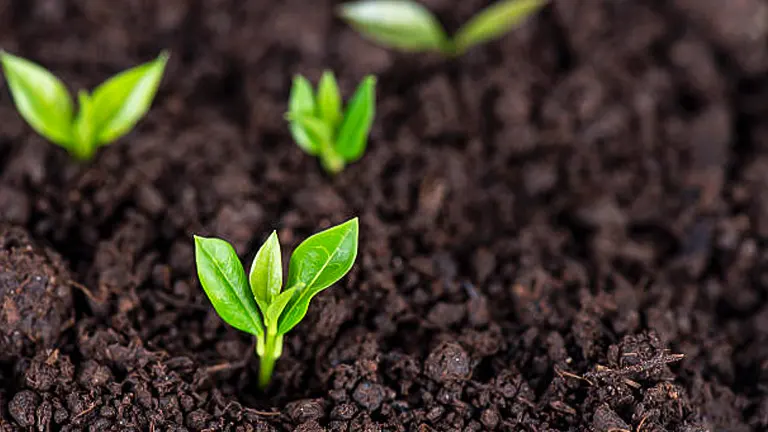
Soil is a complex ecosystem vital for plant health. It serves not only as a physical foundation but also as a source of nutrients and water. The health of soil affects everything from a plant’s growth and nutrition to its resistance to pests and diseases. Soil quality can dictate the biodiversity within your garden and influence the overall environmental balance.
Scientific Analysis of Soil Composition
Soil composition affects its ability to hold nutrients and support plant roots. Key components include:
- Clay: Holds nutrients well but can be poor at draining.
- Sand: Drains quickly but holds fewer nutrients.
- Silt: Retains water effectively and is fertile.
- Organic Matter: Improves structure, nutrient content, and water retention.
Each type of soil component plays a role in how well your garden will support plant life. For example, loamy soil, which is an ideal mix of sand, silt, and clay, offers a balance of drainage and nutrient retention that is beneficial for most plants.
Soil Composition and Plant Health
| Soil Type | Drainage | Nutrient Retention | Best For Plant Types |
|---|---|---|---|
| Clay | Slow | High | Shrubs, Perennial Flowers |
| Sand | Fast | Low | Cacti, Succulents |
| Silt | Moderate | Moderate | Grasses, Flowering Annuals |
| Loam | Balanced | High | Vegetables, Fruit Trees |
Improving Soil Quality
Enhancing your soil involves more than just adding nutrients; it requires a holistic approach to managing its structure and chemistry:
- Adding Organic Matter: Compost, leaf mold, and manure not only enrich the soil with nutrients but also improve its structure and its ability to retain water and air.
- Adjusting pH Levels: Most plants thrive in slightly acidic to neutral soil (pH 6.0-7.0). Use a soil test kit to determine the pH and adjust it with lime to increase alkalinity or sulfur to increase acidity, targeting the specific needs of your plants.
Maintaining Soil Health
Ongoing soil care is crucial for sustained plant health and garden productivity:
- Crop Rotation: Rotating crops helps prevent soil depletion and reduces the buildup of pests and diseases.
- Cover Crops: Planting cover crops such as clover or vetch can improve soil fertility and structure during off-seasons.
By understanding the components of soil and actively managing its quality, you can create a more robust and nourishing environment for your plants. Regular soil tests and targeted improvements can help maintain optimal conditions for your garden to thrive.
Nutrient Essentials
Vital Nutrients for Healthy Growth

Plants, like humans, require a diverse set of nutrients to thrive, each playing a unique role in their development. Nitrogen (N), Phosphorus (P), and Potassium (K) are considered primary macronutrients, each essential for different aspects of plant health:
- Nitrogen (N) is crucial for chlorophyll production, the compound responsible for photosynthesis and the green color of leaves. It promotes vigorous vegetative growth.
- Phosphorus (P) facilitates energy transfer within the plant, crucial for the development of roots, flowers, and seeds.
- Potassium (K) enhances overall plant vigor, helping to regulate various physiological processes, including photosynthesis, nutrient uptake, and water transport.
In addition to NPK, secondary nutrients such as Calcium (Ca), Magnesium (Mg), and Sulfur (S) are vital for plant structure and function, while trace elements like Iron (Fe), Manganese (Mn), and Zinc (Zn) are required in smaller amounts but are critical for various enzyme functions.
Applying Fertilizers Wisely
The application of fertilizers is a nuanced process that should be tailored to the specific needs of each plant species and its growth stage. Here are detailed steps and considerations for effective fertilizer use:
- Reading Labels: Always check the N-P-K ratio on fertilizer packages to ensure it matches the needs of your plants. For instance, a higher nitrogen content is ideal for leafy plants, while flowering plants may benefit from more phosphorus.
- Application Frequency: Over-fertilization can lead to nutrient burn, while under-fertilization can stunt plant growth. Adhere to the manufacturer’s recommended application schedule, typically found on the fertilizer packaging.
- Method of Application: For granular fertilizers, apply evenly around the base of the plant, avoiding direct contact with the stems or leaves. Water thoroughly after application to help the nutrients integrate into the soil, promoting effective uptake by plant roots.
Nutrient Application Table
Here’s a table outlining the primary functions and application recommendations for each major nutrient:
| Nutrient | Primary Function | Recommended Application (general) |
|---|---|---|
| N (Nitrogen) | Promote leaf growth and green color | Apply in early spring; reduce in late summer to prevent lush growth before frost |
| P (Phosphorus) | Support root development and flowering | Use at planting and during flowering stages |
| K (Potassium) | Enhance overall plant health and immunity | Apply throughout the growing season for continuous support |
Air and Temperature
Creating the Right Environment
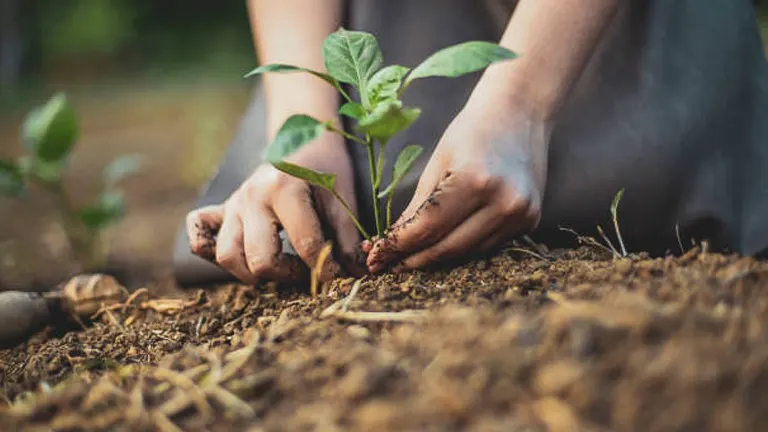
Plants require not only suitable soil and essential nutrients but also optimal environmental conditions for thriving growth. Effective air circulation is pivotal in preventing plant diseases, as it minimizes moisture accumulation on leaves and stems, which can foster fungal and bacterial growth. Similarly, maintaining appropriate temperatures is essential for metabolic processes in plants, influencing everything from germination to photosynthesis.
Managing Environmental Conditions
Proper management of air flow and temperature can dramatically enhance plant health and productivity. Here’s how to effectively regulate these elements for both indoor and outdoor settings:
- Indoor Plants: To ensure healthy air circulation, space plants adequately to allow air to move freely around them. Consider the use of oscillating fans to promote air flow, especially in areas with limited natural air movement. Additionally, avoid placing plants near heat sources like radiators or cold drafts from air conditioning units, as extreme temperatures can stress plants, leading to poor growth or even death.
- Outdoor Plants: Select plant varieties that are well-adapted to your local climate to ensure they can withstand typical temperature variations. Applying mulch around plants can help stabilize soil temperature, retain moisture, and prevent weed growth, thereby creating a more consistent and supportive environment for plant roots.
Temperature Guidelines for Optimal Plant Health
Different plants have varying temperature needs. Below is a table that provides general guidelines on the optimal temperature ranges for various types of plants, which can be especially useful for gardeners looking to maximize the health and yield of their plants:
| Plant Type | Ideal Temperature Range (°F) | Additional Notes |
|---|---|---|
| Tropical Plants | 65 – 75 | Higher humidity levels are often beneficial. |
| Temperate Plants | 60 – 70 | Adapted to moderate climates. |
| Cool-Season Vegetables | 50 – 65 | Best planted in early spring or fall. |
| Desert Plants | 70 – 85 | Require low humidity and high light levels. |
Space to Grow
The Significance of Adequate Space
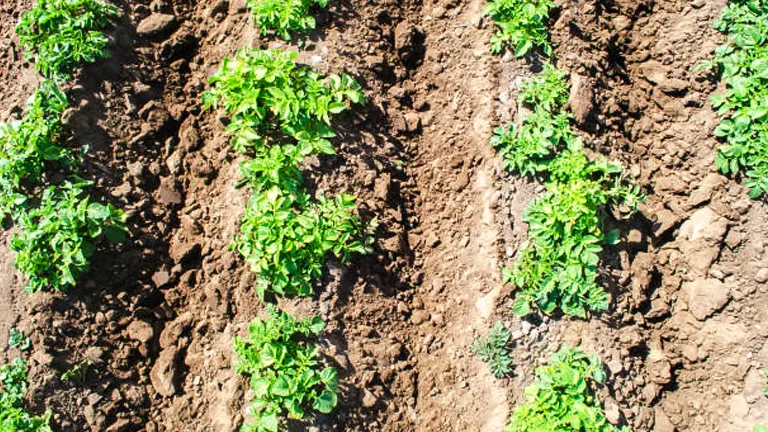
Space is often an overlooked aspect of plant care, yet it’s crucial for the health and development of any garden. Plants need room to spread their roots and leaves, which allows them to absorb nutrients and sunlight more effectively. Crowded plants not only compete for these essential resources but are also more susceptible to disease and pest infestations.
How Much Space Do Plants Need?
Determining the right amount of space depends on the type of plant and its growth habits:
- Root Systems: Some plants, like carrots and beets, need deep soil to expand their root systems, while others, like lettuce, have shallower roots.
- Spread of Leaves: Plants like squash and melons spread wide and require more horizontal space to flourish.
Optimizing Garden Layout for Plant Spacing
Planning your garden layout can significantly affect plant health and yield:
- Vertical Gardening: Utilize vertical space for climbing plants such as peas and beans. This not only saves ground space but also helps in the efficient use of sunlight.
- Row Spacing: Allow sufficient space between rows for air circulation and ease of maintenance. This reduces the risk of fungal diseases and facilitates healthier growth.
Adjusting as Plants Grow
As plants mature, their spacing needs may change. Regularly assess and adjust your garden layout to accommodate growing plants, ensuring they always have the space needed to thrive. This proactive approach can lead to a more robust and productive garden.
Special Care for Specific Plants
Tailoring Care to Plant Needs
Understanding and responding to the unique requirements of each plant species is key to achieving a thriving garden. From the moisture-loving orchids to the sun-basking tomatoes, each plant has its own set of preferences that, when met, lead to robust health and growth.
Caring for Popular Plants
Succulents are champions of survival in dry conditions, thriving in bright light and requiring very little water. They flourish in environments that mimic their natural arid settings, needing well-draining soil and infrequent watering to prevent root rot.
Orchids, on the other hand, evoke the lush, humid environments of the tropics. They prefer indirect light and consistent humidity, requiring a careful balance of moisture that keeps their potting mix lightly damp without becoming soggy.
Tomatoes are avid sun seekers and require ample sunlight to produce their fruits. They benefit greatly from regular feeding and support structures that accommodate their sprawling growth, ensuring both health and productivity.
Addressing Common Plant Challenges
Keeping your garden healthy involves more than just regular watering and sunlight. Vigilance against pests and diseases is crucial. Regular checks can help catch early signs of infestation or illness, allowing for timely interventions. Ensuring good air circulation and appropriate spacing helps minimize the risk of diseases and supports overall plant health.
Related Post
- How to Build a Barn: A Step-by-Step Guide for Beginners
- How to Build a Sustainable Compost Bin: Easy and Eco-Friendly DIY
- How to Fertilize Bougainvillea: A Complete Guide for Stunning Blooms
- How to Fertilize Apple Trees: Essential Tips for a Bountiful Harvest
- How to Fertilize Lemon Trees: Secrets for Thriving Citrus
- How to Fertilize Avocado Tree: A Step-by-Step Guide for Lush Growth
- 10 Best Bow Saws to Buy in 2024: Top Picks for the Money
- Best Miter Saw For Beginners
- Top 10 Pruning Saws to Buy in 2024: Best for the Money
- 7 Best Pocket Chainsaw
Conclusion
In this guide, we’ve explored what plants need to thrive, from the basics of sunlight and water to the nuances of specific care for different types of plants. By understanding and applying these principles, you can enhance the health and productivity of your garden.
As you apply these insights, remember that each plant is a world of its own, and the more attuned you are to its needs, the more successful your gardening will be. Encourage yourself to observe, learn, and adjust your care practices as you grow in your gardening journey.
FAQs
- What are the absolute essentials every plant needs to grow?
All plants need light, water, and nutrients to grow. However, the amount and type of each can vary widely based on the plant species. Proper air circulation and suitable temperatures are also crucial for healthy growth. - How do I determine the right amount of sunlight for different plants?
Sunlight needs can vary: full sun (6-8 hours), partial sun (4-6 hours), and shade (less than 4 hours). Research or check the plant tag to understand the specific needs of each plant, as this will guide you in placing them in your garden or home. - Can you overwater plants, and what are the signs?
Yes, overwatering is a common issue that can lead to root rot and fungal diseases. Signs include yellowing leaves, a musty smell from the soil, and a general droopiness despite moist soil. - What is the best way to check if your plant is receiving enough nutrients?
Look for signs of nutrient deficiency such as stunted growth, pale or yellow leaves, and weak stems. Using a soil test kit can also help determine if your soil lacks specific nutrients. - Are there any tips for adjusting soil pH if it’s not ideal for your plants?
Yes, if the soil is too acidic, you can add lime to raise the pH. If it’s too alkaline, adding sulfur can lower the pH. It’s best to test your soil first and add amendments gradually, retesting the pH as you go. - What are some effective natural fertilizers for promoting plant growth?
Compost, manure, bone meal, and seaweed are excellent natural fertilizers that enrich the soil with nutrients and improve soil structure. - How does air circulation affect plant health?
Good air circulation helps prevent the buildup of excess moisture on plant surfaces, thus reducing the risk of fungal diseases. It also ensures that your plants receive fresh carbon dioxide necessary for photosynthesis. - What is the significance of plant spacing in a garden?
Proper spacing allows each plant adequate room to grow without competition for light, water, and nutrients. It also helps prevent the spread of diseases and pests from one plant to another.
We hope this guide has illuminated the essentials that plants need to thrive. Remember, understanding and meeting these needs can transform your garden into a vibrant, healthy environment.

Emma Hudson
Forestry AuthorEmma's experience in farming shapes her detailed guides on gardening and farming tools, providing practical, actionable advice grounded in real-world experience. Her work targets both newcomers and experienced farmers, aiming to enhance their practices with a mix of traditional wisdom and modern techniques. By making complex agricultural concepts accessible, Emma's guides serve as valuable tools for those navigating the challenges of contemporary farming, offering strategies for sustainable success.










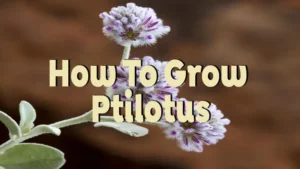


Leave your comment